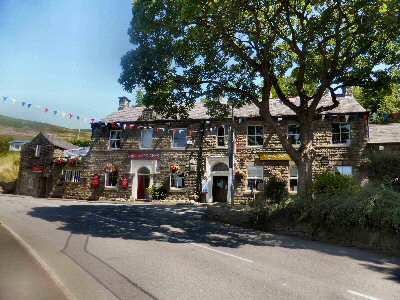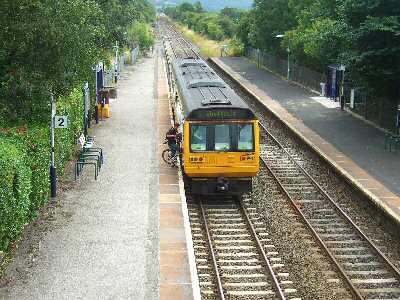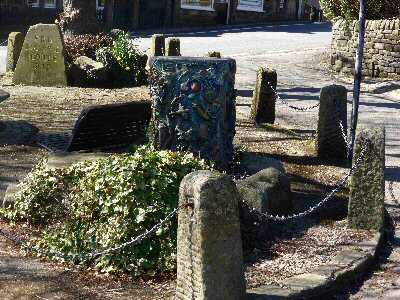BAMFORD
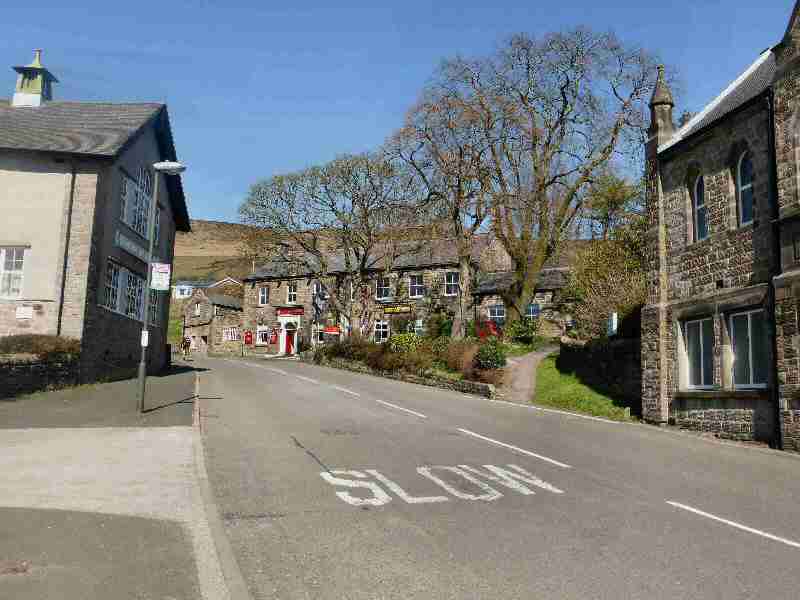
PLAN YOUR DAY OUT
Location: Bamford is on the A6013 between the A57 Sheffield to Glossop Road and the A6187 Hope Valley Road (SK208835). Bamford Railway Station is a short distance to the west of the village, off the A6187.

Visit: Check out the very unusual crossing of the River Derwent, which faces the old village mill – a combination of stepping stones and two high footbridges crossed to reach a field on the other side of the river. – Take a walk along the former railway line, used to carry stone during the construction of the Derwent and Howden dams during the early 1900s, now the Thornhill Trail. – Visit High Peak Garden Centre and Café on Hope Road.
Refreshments: The Angler’s Rest (Tel. 01433 659317) at Bamford became Derbyshire’s first community pub in 2013. Apart from the pub, it also houses a café, a post office, outside seating, and a large car park.
Walk: Ladybower Walk is outstandingly beautiful and must be one of the most enjoyable walks in the Peak District. It is suitable for anyone with a moderate fitness level.
Special Places of Interest in the Locality: Enjoy exploring Castleton with its castle and spectacular collection of caverns. – Edale, where the Nag’s Head Inn is the traditional starting point of the 270-mile Pennine Way Trail, as it winds its way north to the Scottish border at Kirk Yetholm. – David Mellor Cutlery Factory, located in The Round Building at Hathersage, is a purpose-built cutlery factory described as a minor masterpiece of modern architecture. A country shop, museum and café are on site. In 1966, Mellor designed the national traffic light system, which is still in use.
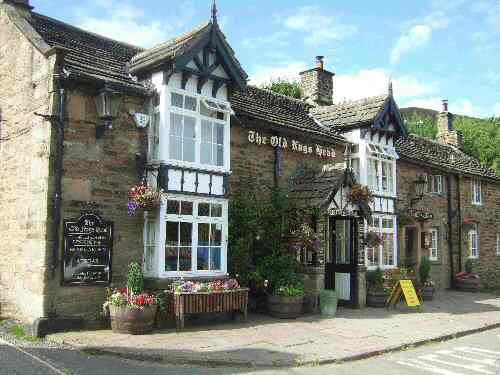

INTRODUCTION
The superbly situated village of Bamford stands at the heart of the Dark Peak, eleven miles west of Sheffield and twenty-five miles east of Manchester. Surrounded by high, impressive moorland scenery, with the gritstone edges of Bamford and Derwent on the northern side and to the west, Win Hill and to the south, the River Derwent flows through the village.
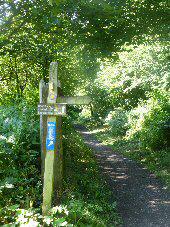
Bamford is the sole surviving village in Derbyshire’s ‘Lake District.’ The villages of Ashopton and Derwent were submerged when the Ladybower Reservoir was constructed. Purpose-built houses were erected at Yorkshire Bridge near the reservoir for the displaced villagers. One person refused to move. Miss A. Cotterill of Ginnett House, whose home looked down on the former hamlet of Derwent, remained there until she died in 1990 at the age of 99, the waters of the reservoir lapping at the front garden steps. The two other reservoirs in the valley, Howden and Derwent, were built in the 20th century.
Visitors from the south to the Upper Derwent Valley Dams tend to pass through Bamford on their way to their destination without stopping. If they did, they would find that this attractive little village has much to offer. At the centre is a pleasant, green triangle of land, where the Jubilee Stone commemorates Queen Victoria’s Jubilee. Opposite the green is a most unusual ‘V’ shaped style, with a cut-out designed to allow a bucket of water to be easily carried from the trough at the rear.
Bamford is a relatively modern village compared with many other Peak District villages. Most buildings date from the early Victorian period to the present. During the mid-20th century, small housing estates were built to the east of the main road through the village.
THE ANGLER’S REST
The Angler’s Rest is a public house, café, and post office. In 2013, over 300 people purchased it collectively to make it the first community pub in Derbyshire, but not without a few headaches along the way.

The decision to try to buy the failing pub saw the community quickly raise the cash agreed for the purchase through community shares, only to find the seller had accepted a rival bid from a developer. A campaign was launched to get widespread support for the project, and the national media soon began to take a positive interest. The outcome came in October 2013, with the pub’s purchase from the owners. It is now listed as a community hub and an asset of community value under the Government’s Localism Act.
THE VILLAGE
The railway station south of the village is a popular stopping point on the Hope Valley line that links Sheffield to Manchester. On the road just below the station, Peak Park has re-erected the Mytham Bridge toll gate, which used to stand nearby. It was one of the toll gates on the first turnpike in the area, built in 1758 to link Sheffield to Sparrowpit.
Situated as it is in an area dominated by hills, with few fences in evidence and sheep in the ascendancy, it might be thought that the Industrial Revolution had not had much of an effect on Bamford. It is far from the truth, as a corn mill operated in the village during the first half of the 18th century. It was then converted to cotton spinning and doubling by local farmer and miller Christopher Kirk, who lost everything when the mill caught fire in 1791.

THE MOORE FAMILY
The Moore family rebuilt the mill, created a weir to provide more power for their cotton mill, and gradually recruited a substantial workforce. Having changed hands several times, it closed in 1965 as a cotton mill. For a time, it was used to make small electrical items. But it has now been converted into high-class accommodation, which looks out on the weir and one of the most unusual river crossings in the country.
In 1861, William Cameron Moore built the church and vicarage at his own expense. Both are fine examples of the work of the noted Victorian architect William Butterfield. Before 1860, Anglican services had been held in the National School, which had been built nearly 40 years previously at the same time as the Wesleyan Chapel. Moore gave generously towards running the schools, and the Village Hall is named after him. He also had mill houses built for his workers.
EVENTS
The annual Well Dressings and Carnival takes place in mid-July. At the same time, the prestigious Bamford Carnival Fell Race takes place, regularly attracting a field of over 200 runners. The race to the top of Win Hill starts and finishes at the Recreation ground.
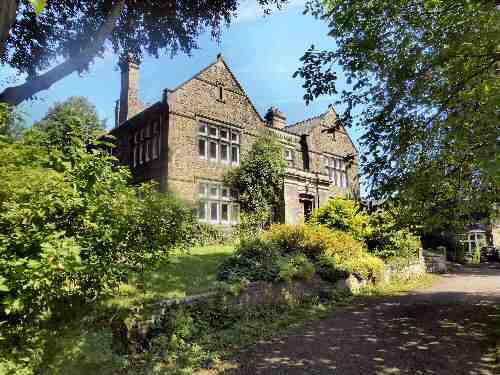
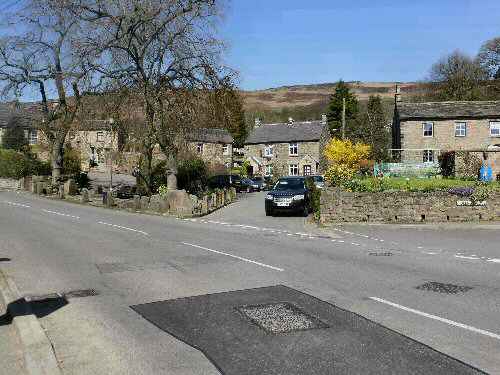
TEN FASCINATING FACTS ABOUT BAMFORD
- When the Howden and Derwent Reservoirs were constructed, 1,000 navvies and their families were housed in corrugated iron shacks at Birchinlee. The locals called it Tin Town.
- When the Ladybower Reservoir was built, the displaced residents moved to Yorkshire Bridge, a tiny hamlet within the parish of Bamford consisting of three rows of attractive gritstone cottages built on the sloping east bank of the Derwent.
- When Ladybower was constructed in the 1930s, the railway line was reopened as a timberline. When it no longer served any useful purpose, the Peak District National Park Authority purchased it and turned it into a bridleway and footpath known as the Thornhill Trail.
- The trail, running along the former railway line, is made of grass and compacted stone and is well-used by the public.
- Bamford Touchstones Sculpture Trail includes a walk along Thornhill Trail. The residents of Bamford established the Touchstones to mark the millennium. They illustrate air, water, earth, and fire and are positioned around the village’s edges.
- The Quakers’ Meeting House on Water Lane was originally the Derwent Valley Water Board office. It has been insulated and provided with all essential requirements, as it was never intended to be lived in. Here, the residents run a low-cost retreat programme covering various subjects.
- To the south of the village, Bamford Railway Station is a popular stopping point on the Hope Valley line that links Sheffield to Manchester.
- Our Lady of Sorrows Catholic Church contains some re-interred graves from the nearby villages of Derwent and Ashopton, submerged following the creation of Ladybower Reservoir.
- Bamford Mill closed permanently in the 1990s, and the building was later converted into flats. The mill engine was preserved on site but is not operational. Every year, locals gather to celebrate the mill and how it brought prosperity to the village.
- Sheep Dog Trials are held on the Bamford with Thornhill Recreation Ground every Spring Bank Holiday Monday. Bamford Sheepdog Trials Association was formed in 1943 and is a registered charity.
Ladybower Walk
